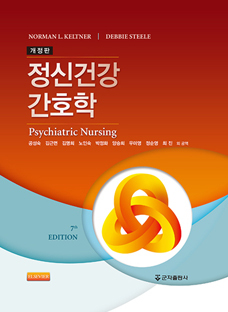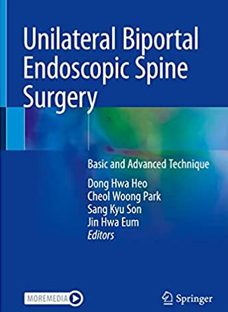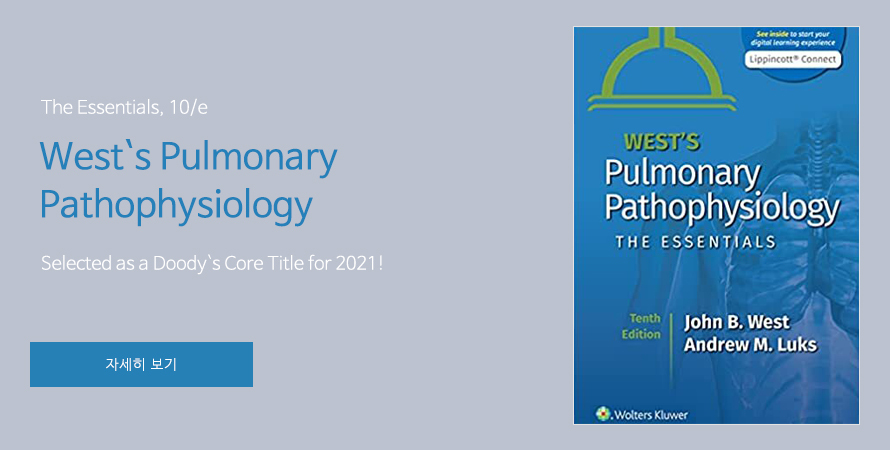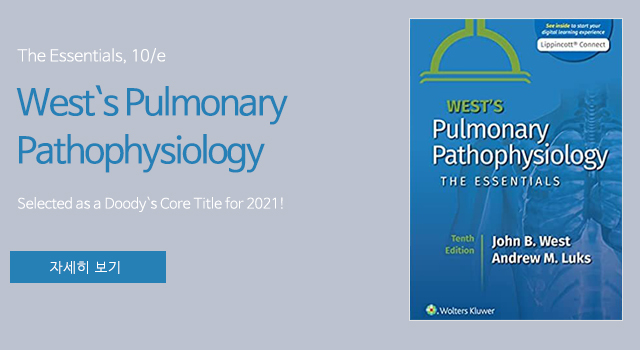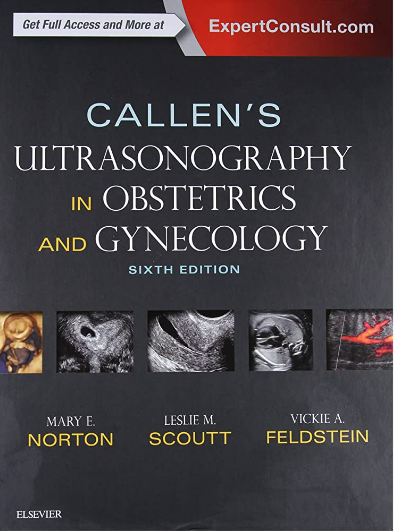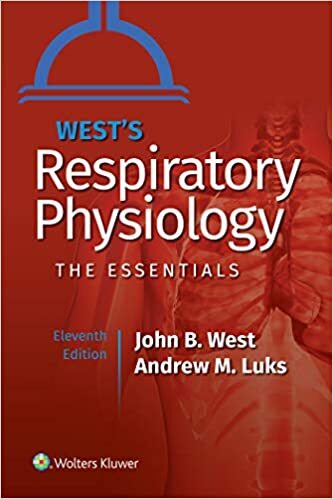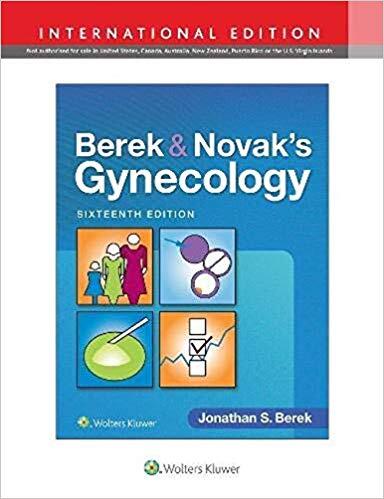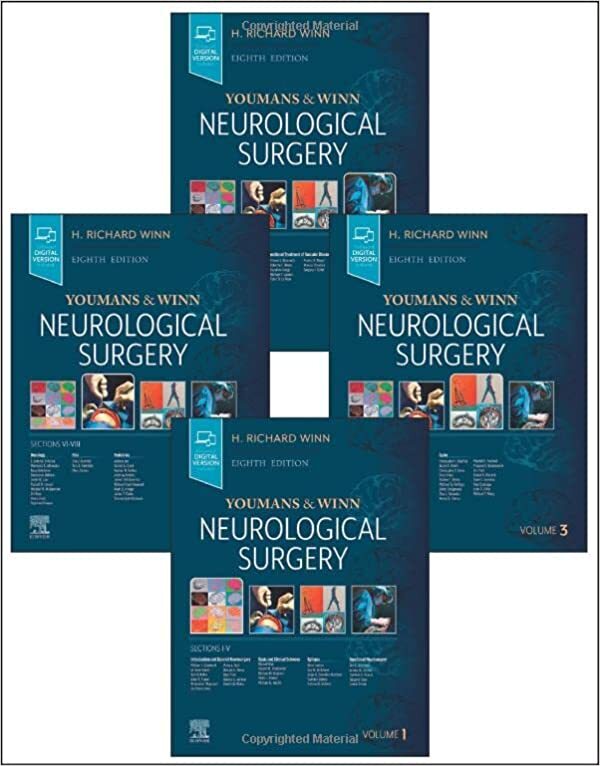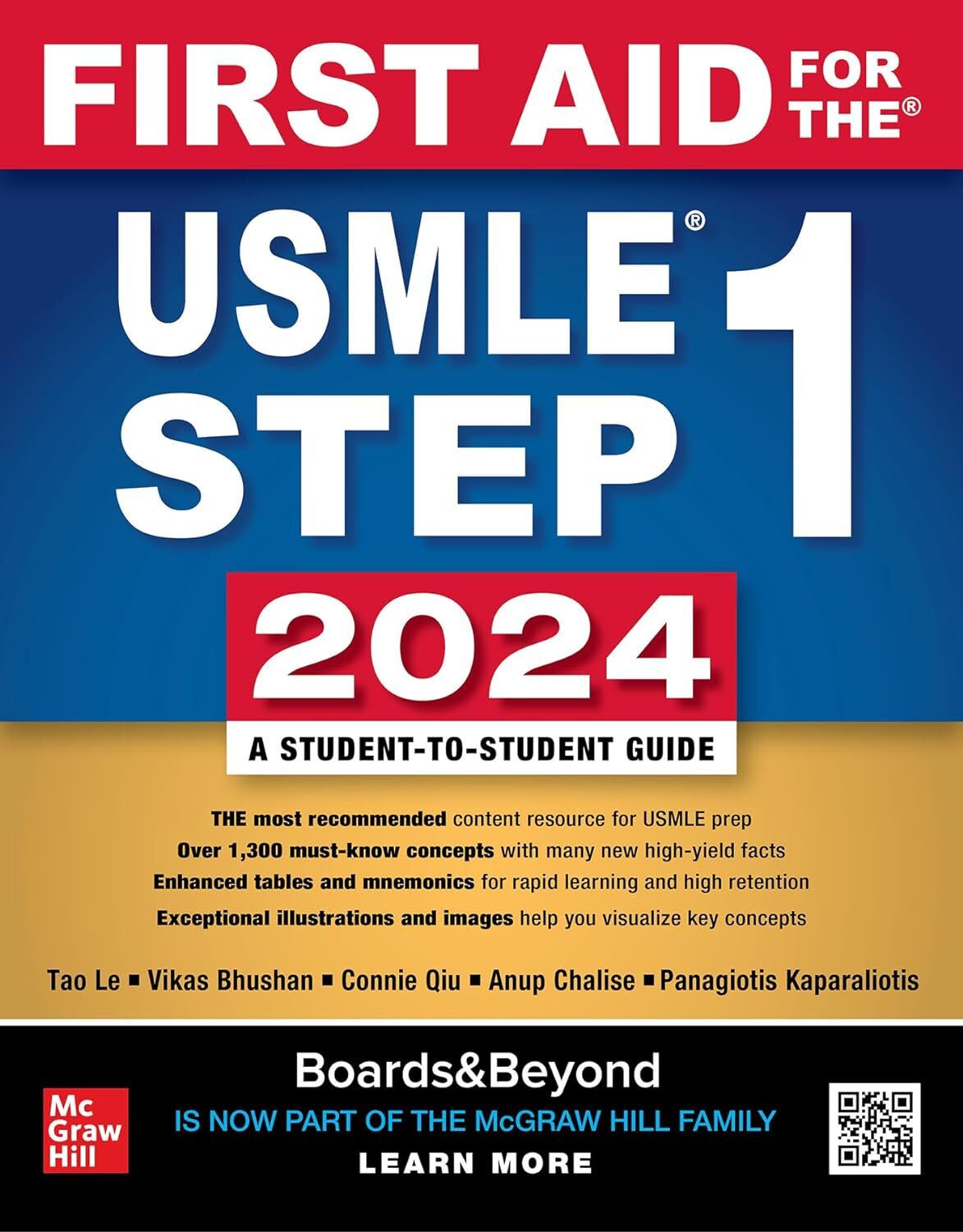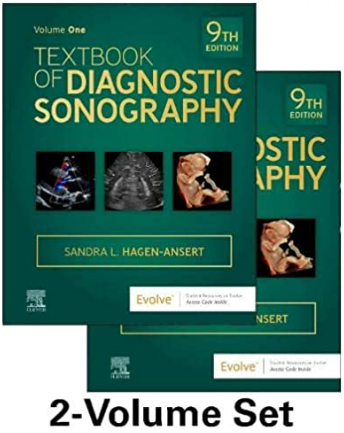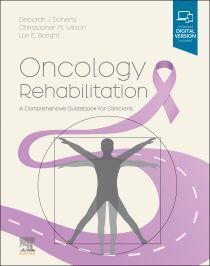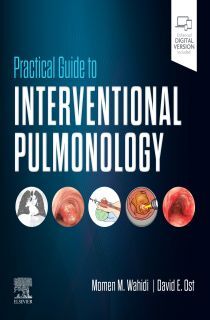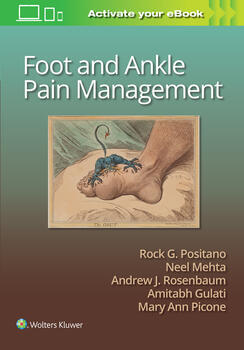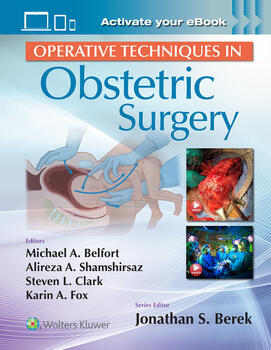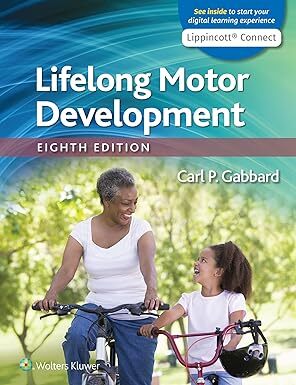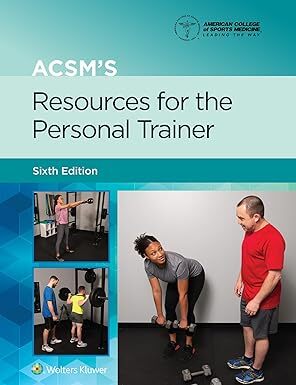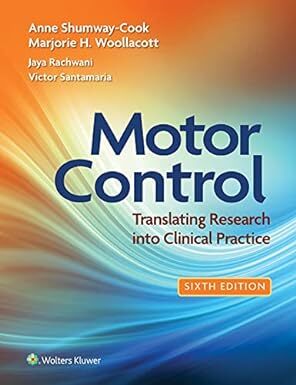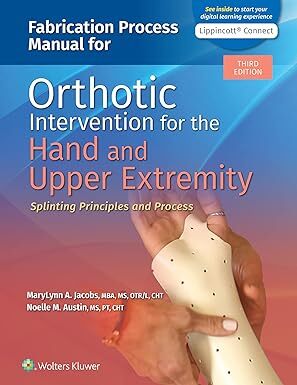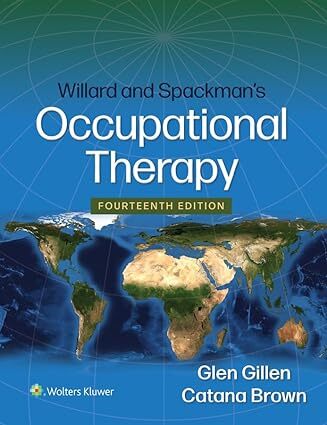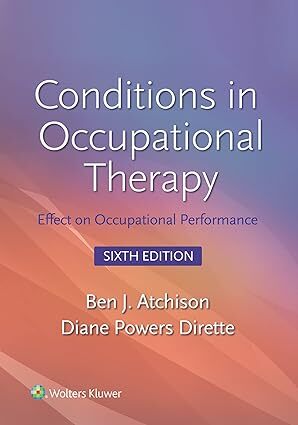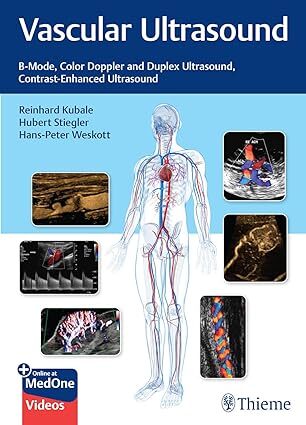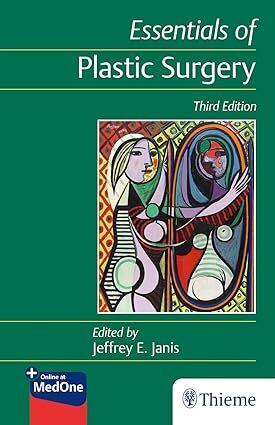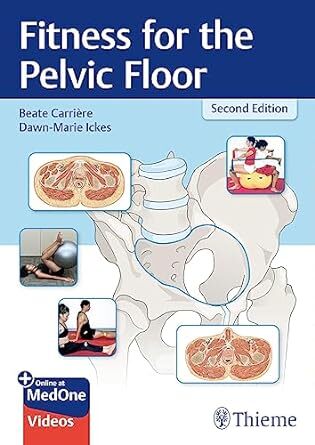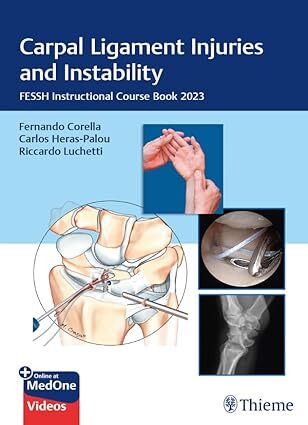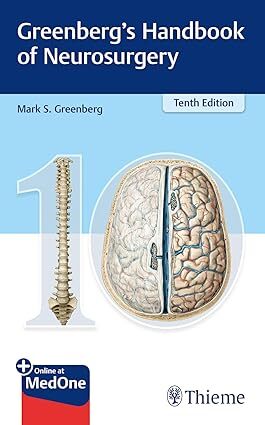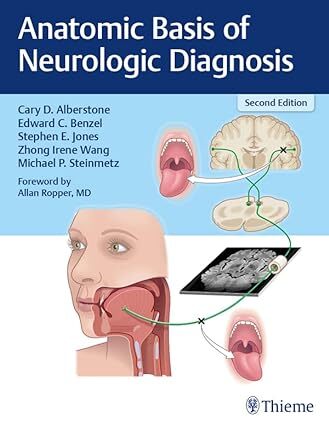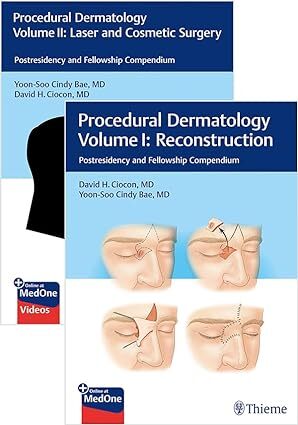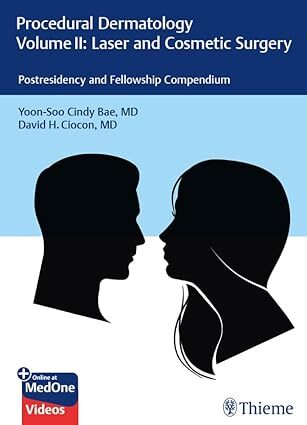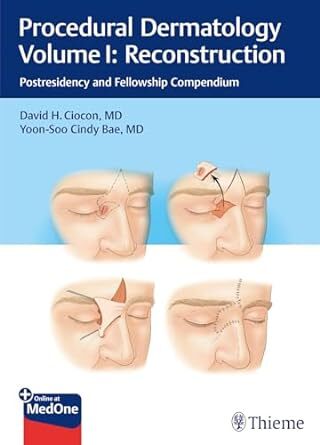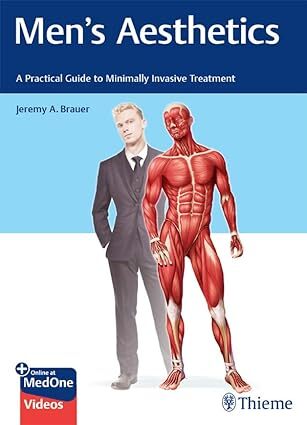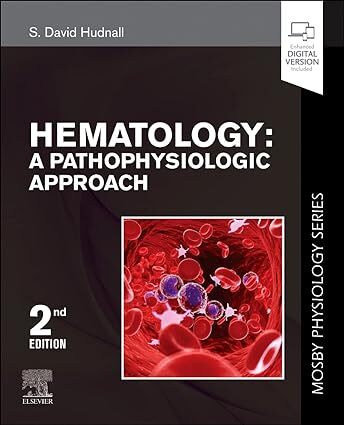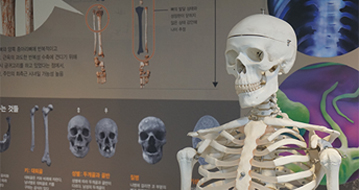Motor Control: Translating Research into Clinical Practice (Lippincott Connect), 6/e
Anne Shumway-Cook
182,000 173,000won
Motor Control: Translating Research into Clinical Practice, 6th Edition, is the only text that bridges the gap between current and emerging motor control research and its application to clinical practice. Written by leading experts in the field, this classic resource prepares users to effectively assess, evaluate, and treat clients with problems related to postural control, mobility, and upper extremity function using today’s evidence-based best practices.
This extensively revised 6th Edition reflects the latest advances in research and features updated images, clinical features, and case studies to ensure a confident transition to practice. Each chapter follows a consistent, straightforward format to simplify studying and reinforce understanding of normal control process issues, age-related issues, research on abnormal function, clinical applications of current research, and evidence to support treatments used in the rehabilitation of patients with motor control problems.Motor Control: Translating Research into Clinical Practice, 6th Edition, is the only text that bridges the gap between current and emerging motor control research and its application to clinical practice. Written by leading experts in the field, this classic resource prepares users to effectively assess, evaluate, and treat clients with problems related to postural control, mobility, and upper extremity function using today’s evidence-based best practices.
This extensively revised 6th Edition reflects the latest advances in research and features updated images, clinical features, and case studies to ensure a confident transition to practice. Each chapter follows a consistent, straightforward format to simplify studying and reinforce understanding of normal control process issues, age-related issues, research on abnormal function, clinical applications of current research, and evidence to support treatments used in the rehabilitation of patients with motor control problems.Motor Control: Translating Research into Clinical Practice, 6th Edition, is the only text that bridges the gap between current and emerging motor control research and its application to clinical practice. Written by leading experts in the field, this classic resource prepares users to effectively assess, evaluate, and treat clients with problems related to postural control, mobility, and upper extremity function using today’s evidence-based best practices.
This extensively revised 6th Edition reflects the latest advances in research and features updated images, clinical features, and case studies to ensure a confident transition to practice. Each chapter follows a consistent, straightforward format to simplify studying and reinforce understanding of normal control process issues, age-related issues, research on abnormal function, clinical applications of current research, and evidence to support treatments used in the rehabilitation of patients with motor control problems.Motor Control: Translating Research into Clinical Practice, 6th Edition, is the only text that bridges the gap between current and emerging motor control research and its application to clinical practice. Written by leading experts in the field, this classic resource prepares users to effectively assess, evaluate, and treat clients with problems related to postural control, mobility, and upper extremity function using today’s evidence-based best practices.
This extensively revised 6th Edition reflects the latest advances in research and features updated images, clinical features, and case studies to ensure a confident transition to practice. Each chapter follows a consistent, straightforward format to simplify studying and reinforce understanding of normal control process issues, age-related issues, research on abnormal function, clinical applications of current research, and evidence to support treatments used in the rehabilitation of patients with motor control problems.Motor Control: Translating Research into Clinical Practice, 6th Edition, is the only text that bridges the gap between current and emerging motor control research and its application to clinical practice. Written by leading experts in the field, this classic resource prepares users to effectively assess, evaluate, and treat clients with problems related to postural control, mobility, and upper extremity function using today’s evidence-based best practices.
This extensively revised 6th Edition reflects the latest advances in research and features updated images, clinical features, and case studies to ensure a confident transition to practice. Each chapter follows a consistent, straightforward format to simplify studying and reinforce understanding of normal control process issues, age-related issues, research on abnormal function, clinical applications of current research, and evidence to support treatments used in the rehabilitation of patients with motor control problems.Motor Control: Translating Research into Clinical Practice, 6th Edition, is the only text that bridges the gap between current and emerging motor control research and its application to clinical practice. Written by leading experts in the field, this classic resource prepares users to effectively assess, evaluate, and treat clients with problems related to postural control, mobility, and upper extremity function using today’s evidence-based best practices.
This extensively revised 6th Edition reflects the latest advances in research and features updated images, clinical features, and case studies to ensure a confident transition to practice. Each chapter follows a consistent, straightforward format to simplify studying and reinforce understanding of normal control process issues, age-related issues, research on abnormal function, clinical applications of current research, and evidence to support treatments used in the rehabilitation of patients with motor control problems.Motor Control: Translating Research into Clinical Practice, 6th Edition, is the only text that bridges the gap between current and emerging motor control research and its application to clinical practice. Written by leading experts in the field, this classic resource prepares users to effectively assess, evaluate, and treat clients with problems related to postural control, mobility, and upper extremity function using today’s evidence-based best practices.
This extensively revised 6th Edition reflects the latest advances in research and features updated images, clinical features, and case studies to ensure a confident transition to practice. Each chapter follows a consistent, straightforward format to simplify studying and reinforce understanding of normal control process issues, age-related issues, research on abnormal function, clinical applications of current research, and evidence to support treatments used in the rehabilitation of patients with motor control problems.Motor Control: Translating Research into Clinical Practice, 6th Edition, is the only text that bridges the gap between current and emerging motor control research and its application to clinical practice. Written by leading experts in the field, this classic resource prepares users to effectively assess, evaluate, and treat clients with problems related to postural control, mobility, and upper extremity function using today’s evidence-based best practices.
This extensively revised 6th Edition reflects the latest advances in research and features updated images, clinical features, and case studies to ensure a confident transition to practice. Each chapter follows a consistent, straightforward format to simplify studying and reinforce understanding of normal control process issues, age-related issues, research on abnormal function, clinical applications of current research, and evidence to support treatments used in the rehabilitation of patients with motor control problems.Motor Control: Translating Research into Clinical Practice, 6th Edition, is the only text that bridges the gap between current and emerging motor control research and its application to clinical practice. Written by leading experts in the field, this classic resource prepares users to effectively assess, evaluate, and treat clients with problems related to postural control, mobility, and upper extremity function using today’s evidence-based best practices.
This extensively revised 6th Edition reflects the latest advances in research and features updated images, clinical features, and case studies to ensure a confident transition to practice. Each chapter follows a consistent, straightforward format to simplify studying and reinforce understanding of normal control process issues, age-related issues, research on abnormal function, clinical applications of current research, and evidence to support treatments used in the rehabilitation of patients with motor control problems.Motor Control: Translating Research into Clinical Practice, 6th Edition, is the only text that bridges the gap between current and emerging motor control research and its application to clinical practice. Written by leading experts in the field, this classic resource prepares users to effectively assess, evaluate, and treat clients with problems related to postural control, mobility, and upper extremity function using today’s evidence-based best practices.
This extensively revised 6th Edition reflects the latest advances in research and features updated images, clinical features, and case studies to ensure a confident transition to practice. Each chapter follows a consistent, straightforward format to simplify studying and reinforce understanding of normal control process issues, age-related issues, research on abnormal function, clinical applications of current research, and evidence to support treatments used in the rehabilitation of patients with motor control problems.Motor Control: Translating Research into Clinical Practice, 6th Edition, is the only text that bridges the gap between current and emerging motor control research and its application to clinical practice. Written by leading experts in the field, this classic resource prepares users to effectively assess, evaluate, and treat clients with problems related to postural control, mobility, and upper extremity function using today’s evidence-based best practices.
This extensively revised 6th Edition reflects the latest advances in research and features updated images, clinical features, and case studies to ensure a confident transition to practice. Each chapter follows a consistent, straightforward format to simplify studying and reinforce understanding of normal control process issues, age-related issues, research on abnormal function, clinical applications of current research, and evidence to support treatments used in the rehabilitation of patients with motor control problems.Motor Control: Translating Research into Clinical Practice, 6th Edition, is the only text that bridges the gap between current and emerging motor control research and its application to clinical practice. Written by leading experts in the field, this classic resource prepares users to effectively assess, evaluate, and treat clients with problems related to postural control, mobility, and upper extremity function using today’s evidence-based best practices.
This extensively revised 6th Edition reflects the latest advances in research and features updated images, clinical features, and case studies to ensure a confident transition to practice. Each chapter follows a consistent, straightforward format to simplify studying and reinforce understanding of normal control process issues, age-related issues, research on abnormal function, clinical applications of current research, and evidence to support treatments used in the rehabilitation of patients with motor control problems.Motor Control: Translating Research into Clinical Practice, 6th Edition, is the only text that bridges the gap between current and emerging motor control research and its application to clinical practice. Written by leading experts in the field, this classic resource prepares users to effectively assess, evaluate, and treat clients with problems related to postural control, mobility, and upper extremity function using today’s evidence-based best practices.
This extensively revised 6th Edition reflects the latest advances in research and features updated images, clinical features, and case studies to ensure a confident transition to practice. Each chapter follows a consistent, straightforward format to simplify studying and reinforce understanding of normal control process issues, age-related issues, research on abnormal function, clinical applications of current research, and evidence to support treatments used in the rehabilitation of patients with motor control problems.Motor Control: Translating Research into Clinical Practice, 6th Edition, is the only text that bridges the gap between current and emerging motor control research and its application to clinical practice. Written by leading experts in the field, this classic resource prepares users to effectively assess, evaluate, and treat clients with problems related to postural control, mobility, and upper extremity function using today’s evidence-based best practices.
This extensively revised 6th Edition reflects the latest advances in research and features updated images, clinical features, and case studies to ensure a confident transition to practice. Each chapter follows a consistent, straightforward format to simplify studying and reinforce understanding of normal control process issues, age-related issues, research on abnormal function, clinical applications of current research, and evidence to support treatments used in the rehabilitation of patients with motor control problems.Motor Control: Translating Research into Clinical Practice, 6th Edition, is the only text that bridges the gap between current and emerging motor control research and its application to clinical practice. Written by leading experts in the field, this classic resource prepares users to effectively assess, evaluate, and treat clients with problems related to postural control, mobility, and upper extremity function using today’s evidence-based best practices.
This extensively revised 6th Edition reflects the latest advances in research and features updated images, clinical features, and case studies to ensure a confident transition to practice. Each chapter follows a consistent, straightforward format to simplify studying and reinforce understanding of normal control process issues, age-related issues, research on abnormal function, clinical applications of current research, and evidence to support treatments used in the rehabilitation of patients with motor control problems.Motor Control: Translating Research into Clinical Practice, 6th Edition, is the only text that bridges the gap between current and emerging motor control research and its application to clinical practice. Written by leading experts in the field, this classic resource prepares users to effectively assess, evaluate, and treat clients with problems related to postural control, mobility, and upper extremity function using today’s evidence-based best practices.
This extensively revised 6th Edition reflects the latest advances in research and features updated images, clinical features, and case studies to ensure a confident transition to practice. Each chapter follows a consistent, straightforward format to simplify studying and reinforce understanding of normal control process issues, age-related issues, research on abnormal function, clinical applications of current research, and evidence to support treatments used in the rehabilitation of patients with motor control problems.Motor Control: Translating Research into Clinical Practice, 6th Edition, is the only text that bridges the gap between current and emerging motor control research and its application to clinical practice. Written by leading experts in the field, this classic resource prepares users to effectively assess, evaluate, and treat clients with problems related to postural control, mobility, and upper extremity function using today’s evidence-based best practices.
This extensively revised 6th Edition reflects the latest advances in research and features updated images, clinical features, and case studies to ensure a confident transition to practice. Each chapter follows a consistent, straightforward format to simplify studying and reinforce understanding of normal control process issues, age-related issues, research on abnormal function, clinical applications of current research, and evidence to support treatments used in the rehabilitation of patients with motor control problems.Motor Control: Translating Research into Clinical Practice, 6th Edition, is the only text that bridges the gap between current and emerging motor control research and its application to clinical practice. Written by leading experts in the field, this classic resource prepares users to effectively assess, evaluate, and treat clients with problems related to postural control, mobility, and upper extremity function using today’s evidence-based best practices.
This extensively revised 6th Edition reflects the latest advances in research and features updated images, clinical features, and case studies to ensure a confident transition to practice. Each chapter follows a consistent, straightforward format to simplify studying and reinforce understanding of normal control process issues, age-related issues, research on abnormal function, clinical applications of current research, and evidence to support treatments used in the rehabilitation of patients with motor control problems.Motor Control: Translating Research into Clinical Practice, 6th Edition, is the only text that bridges the gap between current and emerging motor control research and its application to clinical practice. Written by leading experts in the field, this classic resource prepares users to effectively assess, evaluate, and treat clients with problems related to postural control, mobility, and upper extremity function using today’s evidence-based best practices.
This extensively revised 6th Edition reflects the latest advances in research and features updated images, clinical features, and case studies to ensure a confident transition to practice. Each chapter follows a consistent, straightforward format to simplify studying and reinforce understanding of normal control process issues, age-related issues, research on abnormal function, clinical applications of current research, and evidence to support treatments used in the rehabilitation of patients with motor control problems.Motor Control: Translating Research into Clinical Practice, 6th Edition, is the only text that bridges the gap between current and emerging motor control research and its application to clinical practice. Written by leading experts in the field, this classic resource prepares users to effectively assess, evaluate, and treat clients with problems related to postural control, mobility, and upper extremity function using today’s evidence-based best practices.
This extensively revised 6th Edition reflects the latest advances in research and features updated images, clinical features, and case studies to ensure a confident transition to practice. Each chapter follows a consistent, straightforward format to simplify studying and reinforce understanding of normal control process issues, age-related issues, research on abnormal function, clinical applications of current research, and evidence to support treatments used in the rehabilitation of patients with motor control problems.Motor Control: Translating Research into Clinical Practice, 6th Edition, is the only text that bridges the gap between current and emerging motor control research and its application to clinical practice. Written by leading experts in the field, this classic resource prepares users to effectively assess, evaluate, and treat clients with problems related to postural control, mobility, and upper extremity function using today’s evidence-based best practices.
This extensively revised 6th Edition reflects the latest advances in research and features updated images, clinical features, and case studies to ensure a confident transition to practice. Each chapter follows a consistent, straightforward format to simplify studying and reinforce understanding of normal control process issues, age-related issues, research on abnormal function, clinical applications of current research, and evidence to support treatments used in the rehabilitation of patients with motor control problems.Motor Control: Translating Research into Clinical Practice, 6th Edition, is the only text that bridges the gap between current and emerging motor control research and its application to clinical practice. Written by leading experts in the field, this classic resource prepares users to effectively assess, evaluate, and treat clients with problems related to postural control, mobility, and upper extremity function using today’s evidence-based best practices.
This extensively revised 6th Edition reflects the latest advances in research and features updated images, clinical features, and case studies to ensure a confident transition to practice. Each chapter follows a consistent, straightforward format to simplify studying and reinforce understanding of normal control process issues, age-related issues, research on abnormal function, clinical applications of current research, and evidence to support treatments used in the rehabilitation of patients with motor control problems.Motor Control: Translating Research into Clinical Practice, 6th Edition, is the only text that bridges the gap between current and emerging motor control research and its application to clinical practice. Written by leading experts in the field, this classic resource prepares users to effectively assess, evaluate, and treat clients with problems related to postural control, mobility, and upper extremity function using today’s evidence-based best practices.
This extensively revised 6th Edition reflects the latest advances in research and features updated images, clinical features, and case studies to ensure a confident transition to practice. Each chapter follows a consistent, straightforward format to simplify studying and reinforce understanding of normal control process issues, age-related issues, research on abnormal function, clinical applications of current research, and evidence to support treatments used in the rehabilitation of patients with motor control problems.Motor Control: Translating Research into Clinical Practice, 6th Edition, is the only text that bridges the gap between current and emerging motor control research and its application to clinical practice. Written by leading experts in the field, this classic resource prepares users to effectively assess, evaluate, and treat clients with problems related to postural control, mobility, and upper extremity function using today’s evidence-based best practices.
This extensively revised 6th Edition reflects the latest advances in research and features updated images, clinical features, and case studies to ensure a confident transition to practice. Each chapter follows a consistent, straightforward format to simplify studying and reinforce understanding of normal control process issues, age-related issues, research on abnormal function, clinical applications of current research, and evidence to support treatments used in the rehabilitation of patients with motor control problems.Motor Control: Translating Research into Clinical Practice, 6th Edition, is the only text that bridges the gap between current and emerging motor control research and its application to clinical practice. Written by leading experts in the field, this classic resource prepares users to effectively assess, evaluate, and treat clients with problems related to postural control, mobility, and upper extremity function using today’s evidence-based best practices.
This extensively revised 6th Edition reflects the latest advances in research and features updated images, clinical features, and case studies to ensure a confident transition to practice. Each chapter follows a consistent, straightforward format to simplify studying and reinforce understanding of normal control process issues, age-related issues, research on abnormal function, clinical applications of current research, and evidence to support treatments used in the rehabilitation of patients with motor control problems.Motor Control: Translating Research into Clinical Practice, 6th Edition, is the only text that bridges the gap between current and emerging motor control research and its application to clinical practice. Written by leading experts in the field, this classic resource prepares users to effectively assess, evaluate, and treat clients with problems related to postural control, mobility, and upper extremity function using today’s evidence-based best practices.
This extensively revised 6th Edition reflects the latest advances in research and features updated images, clinical features, and case studies to ensure a confident transition to practice. Each chapter follows a consistent, straightforward format to simplify studying and reinforce understanding of normal control process issues, age-related issues, research on abnormal function, clinical applications of current research, and evidence to support treatments used in the rehabilitation of patients with motor control problems.Motor Control: Translating Research into Clinical Practice, 6th Edition, is the only text that bridges the gap between current and emerging motor control research and its application to clinical practice. Written by leading experts in the field, this classic resource prepares users to effectively assess, evaluate, and treat clients with problems related to postural control, mobility, and upper extremity function using today’s evidence-based best practices.
This extensively revised 6th Edition reflects the latest advances in research and features updated images, clinical features, and case studies to ensure a confident transition to practice. Each chapter follows a consistent, straightforward format to simplify studying and reinforce understanding of normal control process issues, age-related issues, research on abnormal function, clinical applications of current research, and evidence to support treatments used in the rehabilitation of patients with motor control problems.Motor Control: Translating Research into Clinical Practice, 6th Edition, is the only text that bridges the gap between current and emerging motor control research and its application to clinical practice. Written by leading experts in the field, this classic resource prepares users to effectively assess, evaluate, and treat clients with problems related to postural control, mobility, and upper extremity function using today’s evidence-based best practices.
This extensively revised 6th Edition reflects the latest advances in research and features updated images, clinical features, and case studies to ensure a confident transition to practice. Each chapter follows a consistent, straightforward format to simplify studying and reinforce understanding of normal control process issues, age-related issues, research on abnormal function, clinical applications of current research, and evidence to support treatments used in the rehabilitation of patients with motor control problems.Motor Control: Translating Research into Clinical Practice, 6th Edition, is the only text that bridges the gap between current and emerging motor control research and its application to clinical practice. Written by leading experts in the field, this classic resource prepares users to effectively assess, evaluate, and treat clients with problems related to postural control, mobility, and upper extremity function using today’s evidence-based best practices.
This extensively revised 6th Edition reflects the latest advances in research and features updated images, clinical features, and case studies to ensure a confident transition to practice. Each chapter follows a consistent, straightforward format to simplify studying and reinforce understanding of normal control process issues, age-related issues, research on abnormal function, clinical applications of current research, and evidence to support treatments used in the rehabilitation of patients with motor control problems.Motor Control: Translating Research into Clinical Practice, 6th Edition, is the only text that bridges the gap between current and emerging motor control research and its application to clinical practice. Written by leading experts in the field, this classic resource prepares users to effectively assess, evaluate, and treat clients with problems related to postural control, mobility, and upper extremity function using today’s evidence-based best practices.
This extensively revised 6th Edition reflects the latest advances in research and features updated images, clinical features, and case studies to ensure a confident transition to practice. Each chapter follows a consistent, straightforward format to simplify studying and reinforce understanding of normal control process issues, age-related issues, research on abnormal function, clinical applications of current research, and evidence to support treatments used in the rehabilitation of patients with motor control problems.Motor Control: Translating Research into Clinical Practice, 6th Edition, is the only text that bridges the gap between current and emerging motor control research and its application to clinical practice. Written by leading experts in the field, this classic resource prepares users to effectively assess, evaluate, and treat clients with problems related to postural control, mobility, and upper extremity function using today’s evidence-based best practices.
This extensively revised 6th Edition reflects the latest advances in research and features updated images, clinical features, and case studies to ensure a confident transition to practice. Each chapter follows a consistent, straightforward format to simplify studying and reinforce understanding of normal control process issues, age-related issues, research on abnormal function, clinical applications of current research, and evidence to support treatments used in the rehabilitation of patients with motor control problems.Motor Control: Translating Research into Clinical Practice, 6th Edition, is the only text that bridges the gap between current and emerging motor control research and its application to clinical practice. Written by leading experts in the field, this classic resource prepares users to effectively assess, evaluate, and treat clients with problems related to postural control, mobility, and upper extremity function using today’s evidence-based best practices.
This extensively revised 6th Edition reflects the latest advances in research and features updated images, clinical features, and case studies to ensure a confident transition to practice. Each chapter follows a consistent, straightforward format to simplify studying and reinforce understanding of normal control process issues, age-related issues, research on abnormal function, clinical applications of current research, and evidence to support treatments used in the rehabilitation of patients with motor control problems.Motor Control: Translating Research into Clinical Practice, 6th Edition, is the only text that bridges the gap between current and emerging motor control research and its application to clinical practice. Written by leading experts in the field, this classic resource prepares users to effectively assess, evaluate, and treat clients with problems related to postural control, mobility, and upper extremity function using today’s evidence-based best practices.
This extensively revised 6th Edition reflects the latest advances in research and features updated images, clinical features, and case studies to ensure a confident transition to practice. Each chapter follows a consistent, straightforward format to simplify studying and reinforce understanding of normal control process issues, age-related issues, research on abnormal function, clinical applications of current research, and evidence to support treatments used in the rehabilitation of patients with motor control problems.Motor Control: Translating Research into Clinical Practice, 6th Edition, is the only text that bridges the gap between current and emerging motor control research and its application to clinical practice. Written by leading experts in the field, this classic resource prepares users to effectively assess, evaluate, and treat clients with problems related to postural control, mobility, and upper extremity function using today’s evidence-based best practices.
This extensively revised 6th Edition reflects the latest advances in research and features updated images, clinical features, and case studies to ensure a confident transition to practice. Each chapter follows a consistent, straightforward format to simplify studying and reinforce understanding of normal control process issues, age-related issues, research on abnormal function, clinical applications of current research, and evidence to support treatments used in the rehabilitation of patients with motor control problems.Motor Control: Translating Research into Clinical Practice, 6th Edition, is the only text that bridges the gap between current and emerging motor control research and its application to clinical practice. Written by leading experts in the field, this classic resource prepares users to effectively assess, evaluate, and treat clients with problems related to postural control, mobility, and upper extremity function using today’s evidence-based best practices.
This extensively revised 6th Edition reflects the latest advances in research and features updated images, clinical features, and case studies to ensure a confident transition to practice. Each chapter follows a consistent, straightforward format to simplify studying and reinforce understanding of normal control process issues, age-related issues, research on abnormal function, clinical applications of current research, and evidence to support treatments used in the rehabilitation of patients with motor control problems.Motor Control: Translating Research into Clinical Practice, 6th Edition, is the only text that bridges the gap between current and emerging motor control research and its application to clinical practice. Written by leading experts in the field, this classic resource prepares users to effectively assess, evaluate, and treat clients with problems related to postural control, mobility, and upper extremity function using today’s evidence-based best practices.
This extensively revised 6th Edition reflects the latest advances in research and features updated images, clinical features, and case studies to ensure a confident transition to practice. Each chapter follows a consistent, straightforward format to simplify studying and reinforce understanding of normal control process issues, age-related issues, research on abnormal function, clinical applications of current research, and evidence to support treatments used in the rehabilitation of patients with motor control problems.Motor Control: Translating Research into Clinical Practice, 6th Edition, is the only text that bridges the gap between current and emerging motor control research and its application to clinical practice. Written by leading experts in the field, this classic resource prepares users to effectively assess, evaluate, and treat clients with problems related to postural control, mobility, and upper extremity function using today’s evidence-based best practices.
This extensively revised 6th Edition reflects the latest advances in research and features updated images, clinical features, and case studies to ensure a confident transition to practice. Each chapter follows a consistent, straightforward format to simplify studying and reinforce understanding of normal control process issues, age-related issues, research on abnormal function, clinical applications of current research, and evidence to support treatments used in the rehabilitation of patients with motor control problems.Motor Control: Translating Research into Clinical Practice, 6th Edition, is the only text that bridges the gap between current and emerging motor control research and its application to clinical practice. Written by leading experts in the field, this classic resource prepares users to effectively assess, evaluate, and treat clients with problems related to postural control, mobility, and upper extremity function using today’s evidence-based best practices.
This extensively revised 6th Edition reflects the latest advances in research and features updated images, clinical features, and case studies to ensure a confident transition to practice. Each chapter follows a consistent, straightforward format to simplify studying and reinforce understanding of normal control process issues, age-related issues, research on abnormal function, clinical applications of current research, and evidence to support treatments used in the rehabilitation of patients with motor control problems.Motor Control: Translating Research into Clinical Practice, 6th Edition, is the only text that bridges the gap between current and emerging motor control research and its application to clinical practice. Written by leading experts in the field, this classic resource prepares users to effectively assess, evaluate, and treat clients with problems related to postural control, mobility, and upper extremity function using today’s evidence-based best practices.
This extensively revised 6th Edition reflects the latest advances in research and features updated images, clinical features, and case studies to ensure a confident transition to practice. Each chapter follows a consistent, straightforward format to simplify studying and reinforce understanding of normal control process issues, age-related issues, research on abnormal function, clinical applications of current research, and evidence to support treatments used in the rehabilitation of patients with motor control problems.Motor Control: Translating Research into Clinical Practice, 6th Edition, is the only text that bridges the gap between current and emerging motor control research and its application to clinical practice. Written by leading experts in the field, this classic resource prepares users to effectively assess, evaluate, and treat clients with problems related to postural control, mobility, and upper extremity function using today’s evidence-based best practices.
This extensively revised 6th Edition reflects the latest advances in research and features updated images, clinical features, and case studies to ensure a confident transition to practice. Each chapter follows a consistent, straightforward format to simplify studying and reinforce understanding of normal control process issues, age-related issues, research on abnormal function, clinical applications of current research, and evidence to support treatments used in the rehabilitation of patients with motor control problems.Motor Control: Translating Research into Clinical Practice, 6th Edition, is the only text that bridges the gap between current and emerging motor control research and its application to clinical practice. Written by leading experts in the field, this classic resource prepares users to effectively assess, evaluate, and treat clients with problems related to postural control, mobility, and upper extremity function using today’s evidence-based best practices.
This extensively revised 6th Edition reflects the latest advances in research and features updated images, clinical features, and case studies to ensure a confident transition to practice. Each chapter follows a consistent, straightforward format to simplify studying and reinforce understanding of normal control process issues, age-related issues, research on abnormal function, clinical applications of current research, and evidence to support treatments used in the rehabilitation of patients with motor control problems.Motor Control: Translating Research into Clinical Practice, 6th Edition, is the only text that bridges the gap between current and emerging motor control research and its application to clinical practice. Written by leading experts in the field, this classic resource prepares users to effectively assess, evaluate, and treat clients with problems related to postural control, mobility, and upper extremity function using today’s evidence-based best practices.
This extensively revised 6th Edition reflects the latest advances in research and features updated images, clinical features, and case studies to ensure a confident transition to practice. Each chapter follows a consistent, straightforward format to simplify studying and reinforce understanding of normal control process issues, age-related issues, research on abnormal function, clinical applications of current research, and evidence to support treatments used in the rehabilitation of patients with motor control problems.Motor Control: Translating Research into Clinical Practice, 6th Edition, is the only text that bridges the gap between current and emerging motor control research and its application to clinical practice. Written by leading experts in the field, this classic resource prepares users to effectively assess, evaluate, and treat clients with problems related to postural control, mobility, and upper extremity function using today’s evidence-based best practices.
This extensively revised 6th Edition reflects the latest advances in research and features updated images, clinical features, and case studies to ensure a confident transition to practice. Each chapter follows a consistent, straightforward format to simplify studying and reinforce understanding of normal control process issues, age-related issues, research on abnormal function, clinical applications of current research, and evidence to support treatments used in the rehabilitation of patients with motor control problems.Motor Control: Translating Research into Clinical Practice, 6th Edition, is the only text that bridges the gap between current and emerging motor control research and its application to clinical practice. Written by leading experts in the field, this classic resource prepares users to effectively assess, evaluate, and treat clients with problems related to postural control, mobility, and upper extremity function using today’s evidence-based best practices.
This extensively revised 6th Edition reflects the latest advances in research and features updated images, clinical features, and case studies to ensure a confident transition to practice. Each chapter follows a consistent, straightforward format to simplify studying and reinforce understanding of normal control process issues, age-related issues, research on abnormal function, clinical applications of current research, and evidence to support treatments used in the rehabilitation of patients with motor control problems.Motor Control: Translating Research into Clinical Practice, 6th Edition, is the only text that bridges the gap between current and emerging motor control research and its application to clinical practice. Written by leading experts in the field, this classic resource prepares users to effectively assess, evaluate, and treat clients with problems related to postural control, mobility, and upper extremity function using today’s evidence-based best practices.
This extensively revised 6th Edition reflects the latest advances in research and features updated images, clinical features, and case studies to ensure a confident transition to practice. Each chapter follows a consistent, straightforward format to simplify studying and reinforce understanding of normal control process issues, age-related issues, research on abnormal function, clinical applications of current research, and evidence to support treatments used in the rehabilitation of patients with motor control problems.Motor Control: Translating Research into Clinical Practice, 6th Edition, is the only text that bridges the gap between current and emerging motor control research and its application to clinical practice. Written by leading experts in the field, this classic resource prepares users to effectively assess, evaluate, and treat clients with problems related to postural control, mobility, and upper extremity function using today’s evidence-based best practices.
This extensively revised 6th Edition reflects the latest advances in research and features updated images, clinical features, and case studies to ensure a confident transition to practice. Each chapter follows a consistent, straightforward format to simplify studying and reinforce understanding of normal control process issues, age-related issues, research on abnormal function, clinical applications of current research, and evidence to support treatments used in the rehabilitation of patients with motor control problems.

